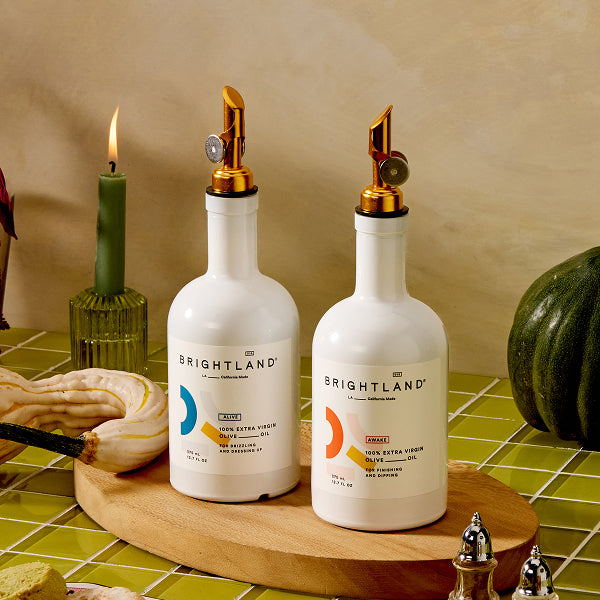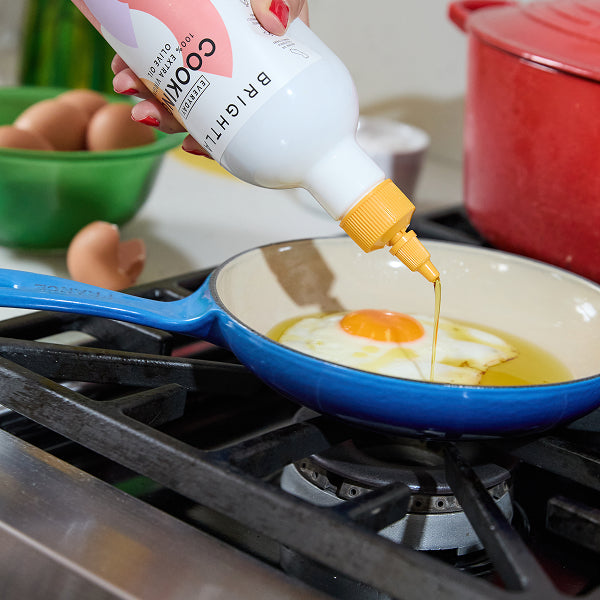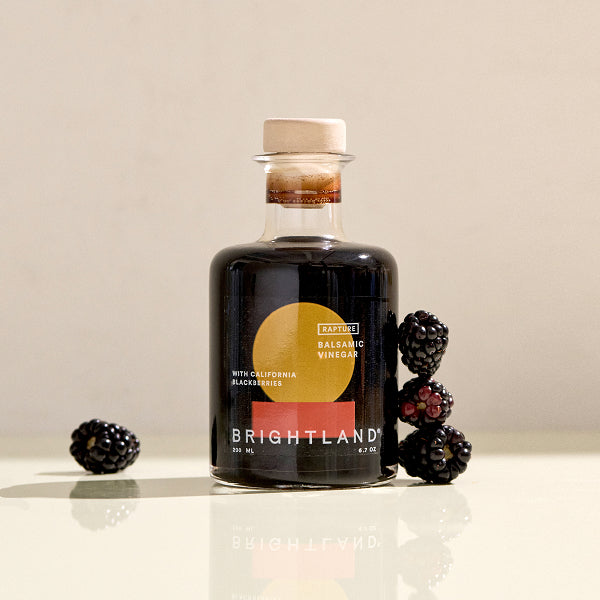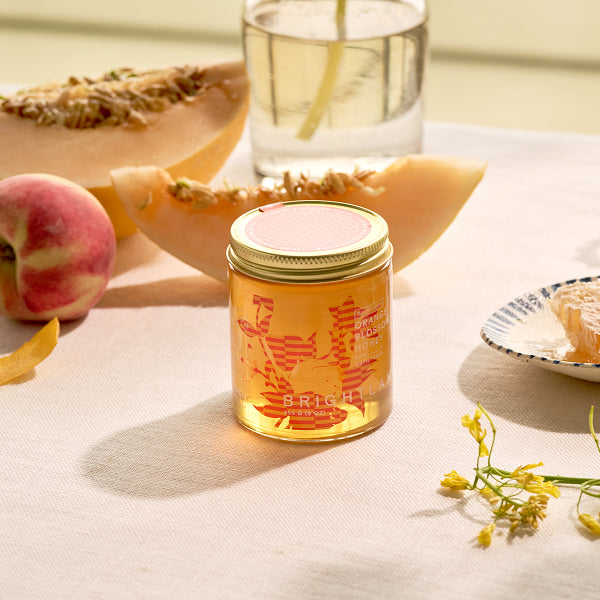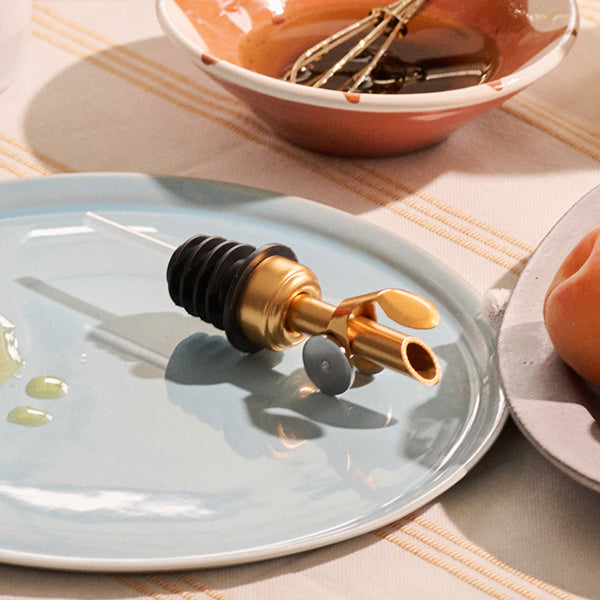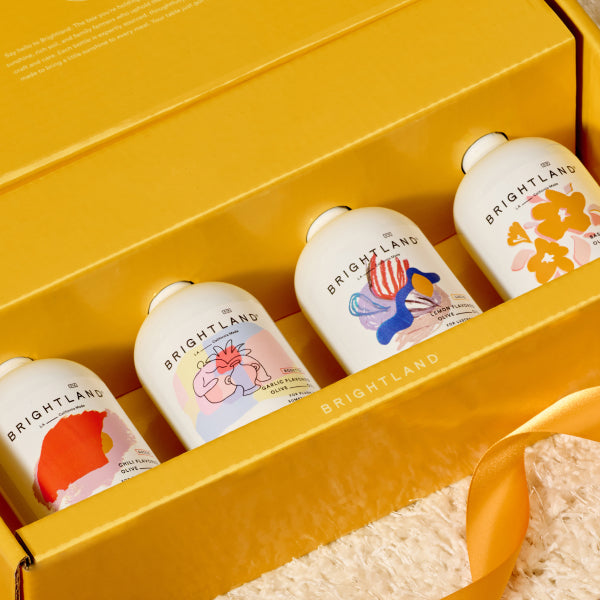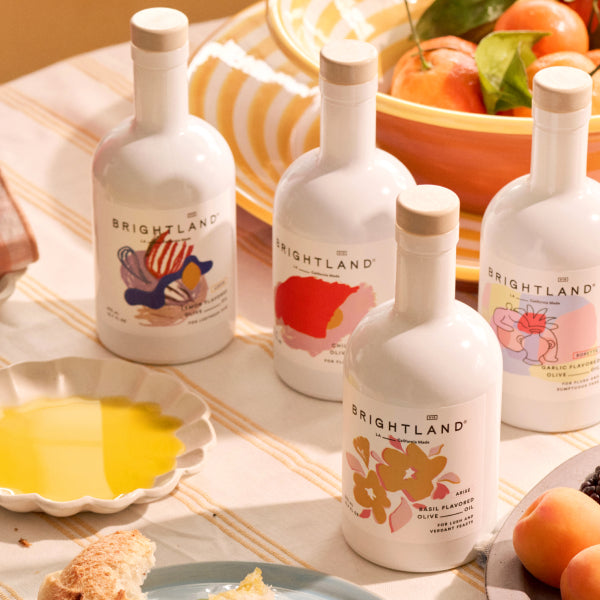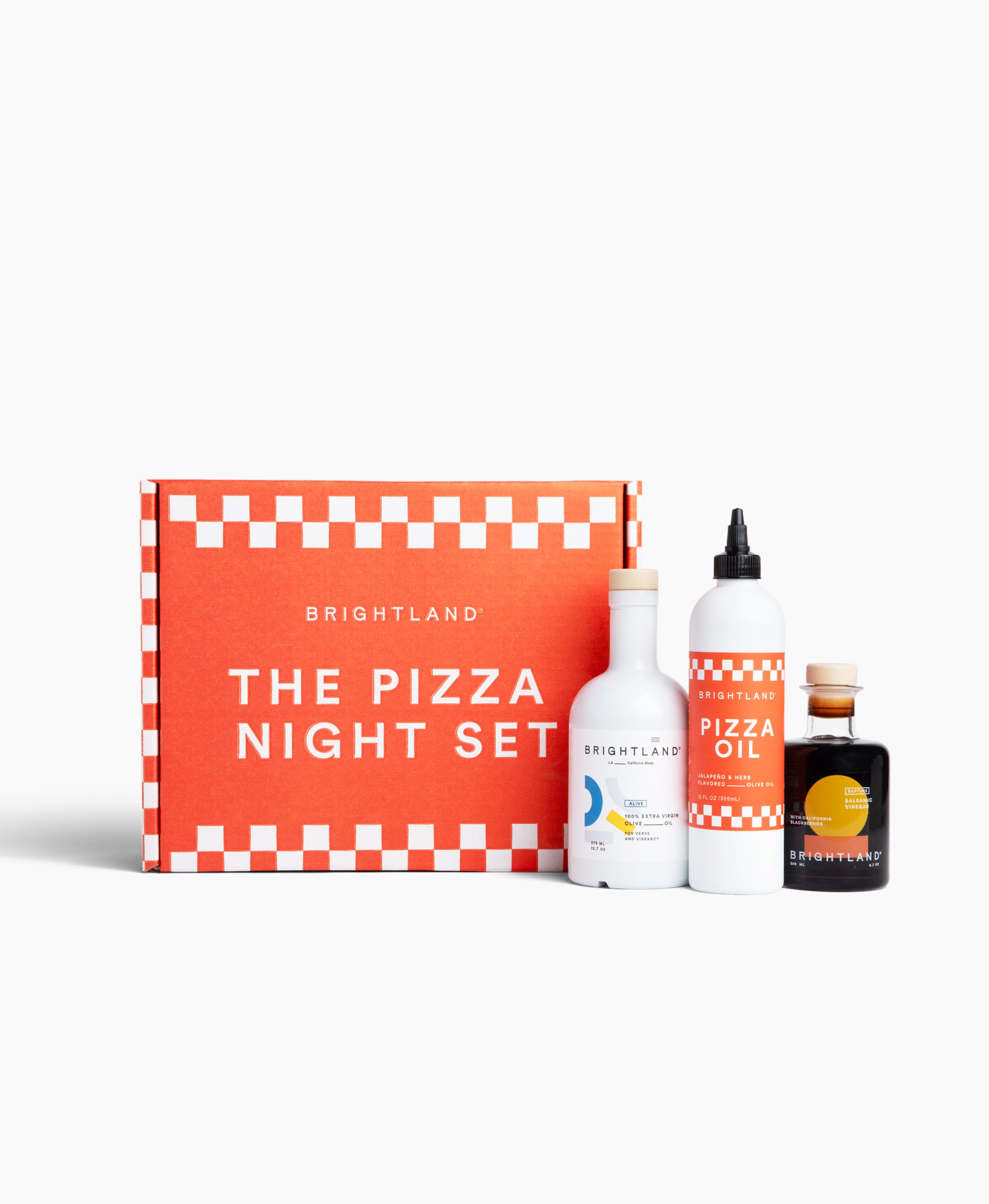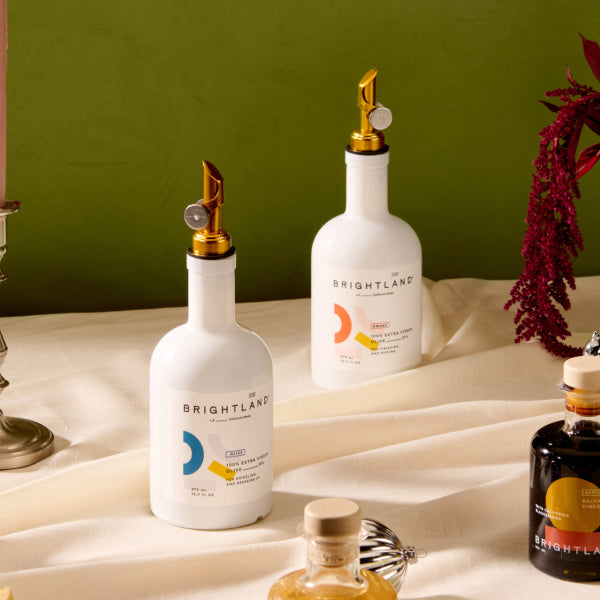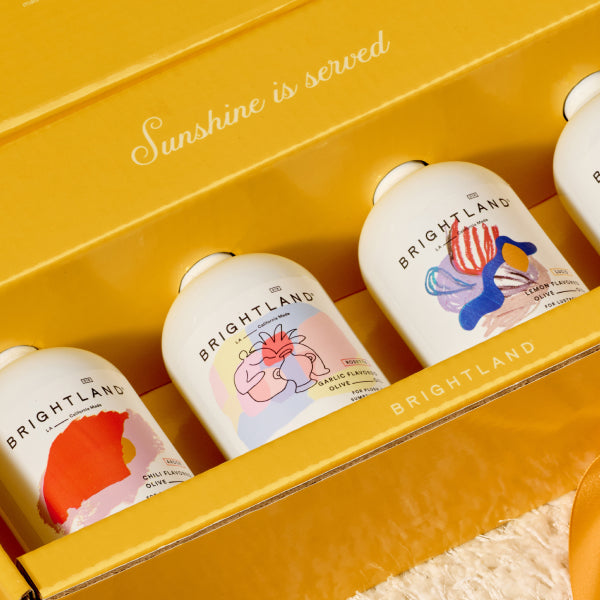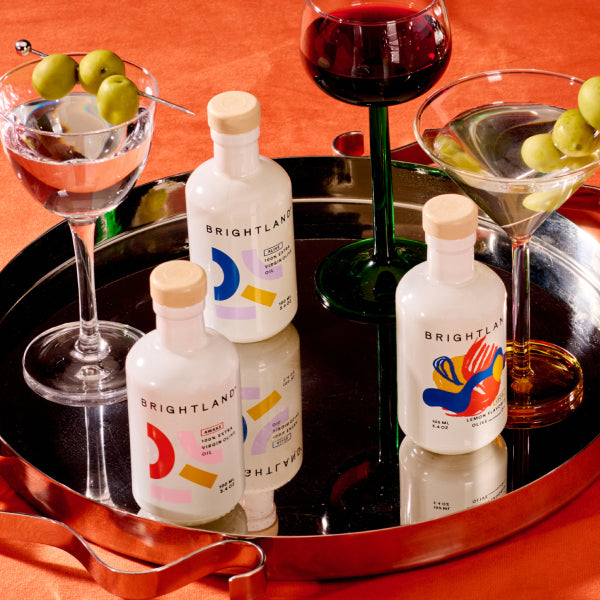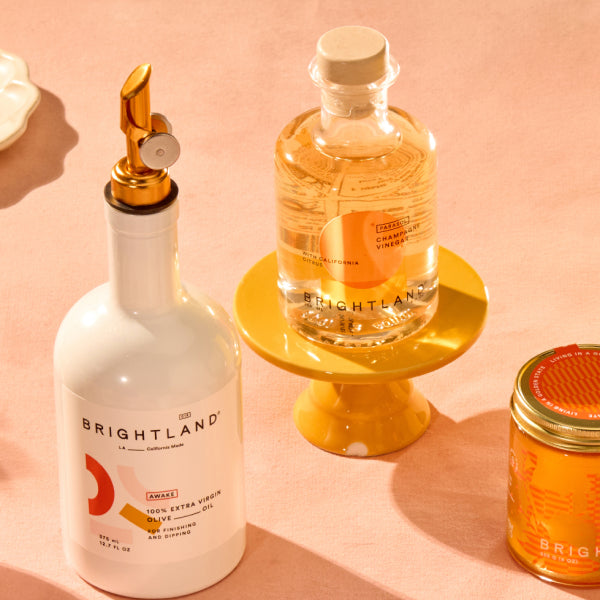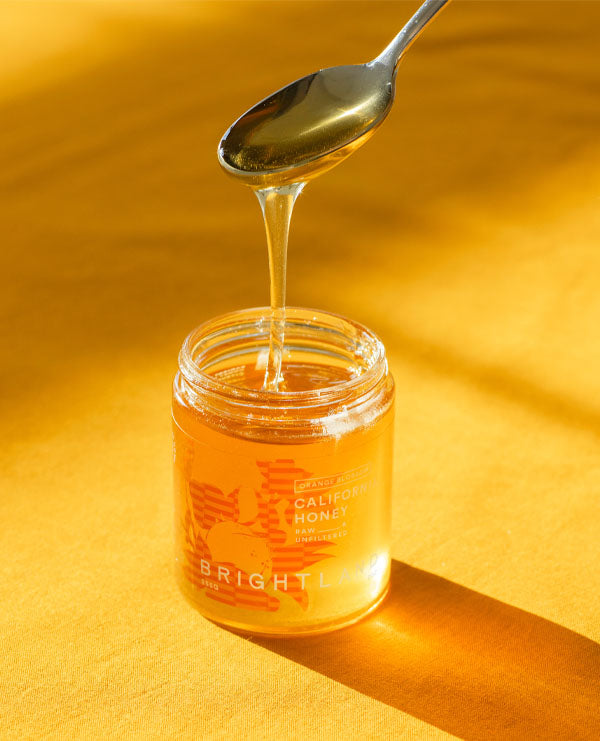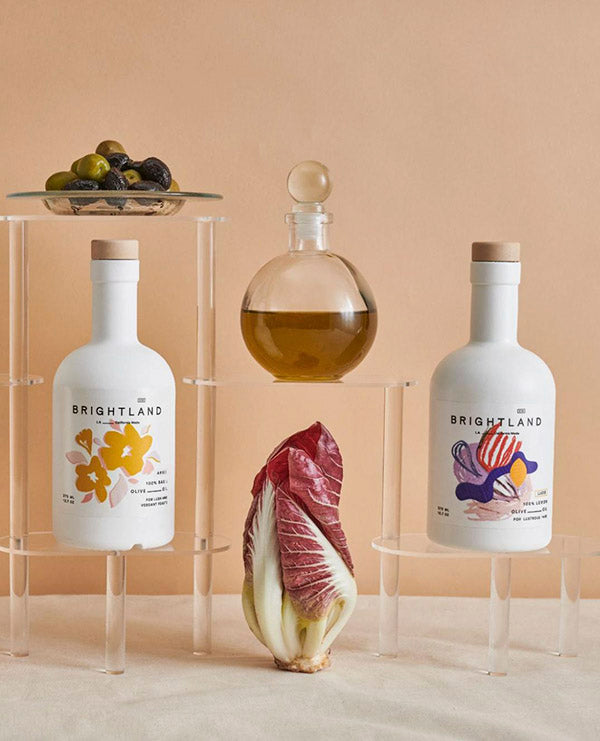[open type="rte"]

Honey and sugar are two of the most widely available and widely used sweeteners. While they are both sweeteners, they also have some key differences: where they come from, how they are harvested and processed, what tastes and textures they have and what nutritional benefits they offer. In this ultimate guide, we break down the differences between honey vs. sugar to help you decide which ones to stock in your pantry.
[close type="rte"][open type="rte"]

[close type="rte"][open type="rte"]
Honey vs. Sugar: How They Are Made
Honey and sugar are both sweeteners, but they come from different sources and are harvested and processed differently. Honey begins its life as nectar inside of a flower. The nectar is extracted by bees, taken back to the hive and broken down into simple sugars inside honeycombs. Some of the liquid evaporates due to the constant fanning of the bees’ wings, as well as the hexagon design of the honeycomb. This evaporation leaves behind the thick, delicious substance that we know as honey.
The honey is harvested by removing the honeycombs from the hive, scraping off the wax caps that seal the honey in the little hexagons and spinning the combs in centrifuges so the honey comes out of the combs. The honeycombs are removed and the honey itself is strained to remove bits of comb and other debris.
Some honey manufacturers, especially big commercial operations, may put the honey through additional refining processes. It may be heated to high temperatures to pasteurize it, filtered again to remove air bubbles and even cut with other syrups to make it sweeter and reduce the cost of production.
On the other hand, most sugar is harvested from one of two plants. First up is sugarcane, a tropical plant that looks a bit like bamboo. Once the plant is mature enough, it is harvested and sent to a sugar mill to be processed.
[close type="rte"][open type="images" small="true"]

[close type="images"][open type="rte"]
Sugar is stored in liquid from the stalks of the sugarcane plant. At the sugar mill, these stalks are washed, shredded and pressed until the sugary juice comes out. This juice is put in a vat and boiled until it crystallizes. Then, the crystallized liquid is put into a centrifuge and spun around to separate the sugar crystals from any remaining liquid.
The sugar is then filtered, usually using carbon, to remove any impurities and make it edible. It is important to note that this filtration step for sugarcane sometimes uses “natural carbon,” a.k.a. bone char from animals, to remove the impurities. While the final sugar does not contain any carbon particles, it does come into contact with them, rendering these sugars unfit for vegan and vegetarian diets.
The second source of sugar — sugar beets — does not require filtration with bone char. The beets are first harvested and the tops are sliced off. The beets are then thinly sliced and pressed to remove the sugary juice and then heated until the liquid crystallizes. Finally, the liquid is spun through a centrifuge until the sugar crystals separate out. Beet sugar usually does not require additional filtration or bleaching, unlike sugarcane.
As you can see, both honey and sugar are made very differently even though they are both sweeteners. These different sources and processing methods result in two substances with very different tastes and textures as well as nutritional benefits. In the next sections, we will dive deeper into these other differences between honey vs. sugar to help you decide between them.
[close type="rte"][open type="rte"]

[close type="rte"][open type="rte"]
Honey vs. Sugar: Taste and Texture
Honey and sugar have very different tastes and textures, so even though they are both sweeteners, they are not quite the same. For one, honey comes in a thick liquid form at room temperature. Heat will liquify it and make it more runny, and will dissolve in substances if heated to a high enough temperature.
Honey also has a different flavor when compared to sugar. In fact, different flowers can be used to make honey, and the various nectars impart different flavors to the final honey. For instance, honey made from the nectar of orange blossoms will naturally taste different than honey made from the nectar of wildflowers, just like the two raw honeys in Brightland’s The Couplet honey set. Thus, the honey may taste like florals or citrus or other flavors in addition to being sweet. Single origin honey, or honey made from a single type of flower, often has the most distinct flavor.
However, the optional filtration and pasteurization processes that we talked about in the previous section can remove a lot of these natural flavors from the honey. That is because these processes remove the pollen and other compounds that are major contributors to the unique flavors of honey variety. If you buy highly processed honey, or mass market honey that has been cut with syrup, then it will have a very generic, sugary taste. To fully enjoy the unique flavors of honey, look for raw, unfiltered honey like those sold by Brightland. These honeys will have the highest levels of pollen and thus the strongest flavor.
[close type="rte"][open type="images" small="true"]

[close type="images"][open type="rte"]
Unlike honey, sugar is a dry, loose granule that dissolves in liquid, even at room temperature. Sugar has less variety in flavor than honey, and most of that flavor comes from differences in processing methods, not the source plants themselves. For instance, brown sugar is simply sugar that has been left with most of its naturally occurring molasses untouched, while white sugar has had all of its molasses removed. Powdered sugar (a.k.a. confectioner’s sugar) has had a small portion of cornstarch added to prevent clumping. Raw sugar (a.k.a. turbinado sugar) has larger crystals and is only minorly filtered to preserve most of its molasses content.
However, these different sugars still have minimal flavor differences when compared to all the raw honeys available. If you are looking for variety in flavor, then raw honey is the way to go. Sugar simply cannot compare to the variety of honeys on the market. However, sugar may be sufficient if you are simply looking to sweeten something instead of adding actual flavor. Fun fact: Volume for volume, honey is actually sweeter than sugar, so it takes less honey to achieve the same amount of sweetness compared to sugar.
The different textures of honey vs. sugar also make them suitable for different applications. Honey is great for mixing into other liquids, especially ones that are heated, such as tea or sauce. The heat liquifies the honey and disperses it evenly. Honey is also excellent for drizzling over dishes — like oatmeal and yogurt — as a topping. However, the dry granules of sugar are a bit easier for baking because they mix evenly into cold batter. Honey can be mixed into batter, but it takes more work to ensure that it is evenly distributed so that you do not end up with lumps of honey.
[close type="rte"][open type="rte"]

[close type="rte"][open type="rte"]
Honey vs. Sugar: Nutritional Benefits
Now it is time to tackle the most important topic: the nutritional differences between honey vs. sugar. Every year, more research comes out about how refined sugar is bad for our health, so many people are looking for alternatives to sugar — and honey is one of the most popular substitutes.
Both honey and sugar obviously have a high content of fructose and glucose, the two main sugar molecules, which is what makes them sweeteners. Honey also contains other beneficial compounds, such as enzymes, amino acids, B vitamins, vitamin C, minerals and antioxidants. Because of these compounds, honey has both antimicrobial and anti-inflammatory effects. This is why so many people find it so soothing to drink a honey hot beverage when they are sick. Sugar contains no other nutritional compounds, so it does not provide the added benefits of honey.
It is important to note that honey that has been heavily processed, pasteurized or highly filtered may not contain the same levels of nutritional compounds, however. These processing methods remove a lot of the pollens and other compounds that are responsible for the nutritional benefits of honey. If you are choosing honey for these nutritional advantages, then you should select a raw unfiltered honey for best results. (Learn more about whether or not honey is good for you.)
[close type="rte"][open type="images" small="true"]

[close type="images"][open type="rte"]
Because sugar contains no other chemical compounds except fructose and glucose (i.e., it is 100 percent sugar), it is processed by your body very quickly, which can lead to blood sugar spikes. On the other hand, around 70 percent of honey is fructose and glucose, while the remaining 30 percent is made up of water and those nutritional compounds we mentioned. Thus, it takes your body longer to process honey vs. sugar, which means that it does not cause your blood sugar to spike in the same way that sugar does.
Honey is higher in calories than sugar, but because honey is sweeter than sugar, you need less honey to achieve the same level of sweetness. Regardless of what sweetener you choose, it is always a good idea to practice moderate consumption in order to reduce blood sugar spikes and reduce your risk of weight gain, type 2 diabetes and heart disease.
One really important thing to understand about honey is that it should not be given to infants under one year of age. This is because honey can sometimes contain trace amounts of bacterial spores that contain botulinum, a harmful toxin. Older children and adults have an immune system that is well-developed enough to defend them against botulinum they may encounter. However, babies’ immune systems are not advanced enough yet to protect them if they do happen to come into contact with botulinum, resulting in infant botulism. Thus, you should exercise caution and keep honey away from your infant until they celebrate their first birthday just to be on the safe side.
[open type="images" count="1"]

[close type="images"][open type="rte"]
Honey vs. Sugar: Which One Should You Choose?
As you can see, honey and sugar are two very different sweeteners, and which one you choose is up to you. Many people like to stock both in their pantry, using sugar for baking and honey for basically everything else. We recommend keeping at least honey on hand due to its superior nutritional properties and delicious flavors.
If you have only ever had the highly processed, mass market honey from big grocery store chains, then you are really missing out on what honey has to offer in terms of both flavor and nutrition. It is definitely worth trying a raw, unfiltered honey like those sold by Brightland to fully experience the advantages. Our raw honey set contains two different flavors — California Orange Blossom and Kauai Wildflower — so that you can experience the range of possibilities offered by raw honey. They come in glass jars for easy storage and reheating should the honey ever crystallize.
Image Credits
Dernkadel/Shutterstock.com
Alf Ribeiro/Shutterstock.com
[close type="rte"]

